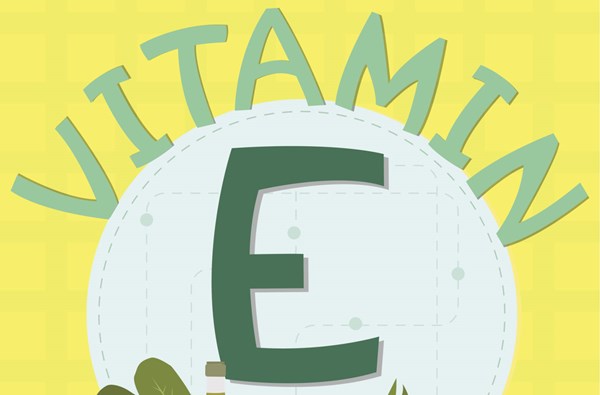 Credit: Thinkstock Vitamin E is found in fresh green forage, and horses consuming an adequate quantity of green forage have not been found to have vitamin E deficiency.
Credit: Thinkstock Vitamin E is found in fresh green forage, and horses consuming an adequate quantity of green forage have not been found to have vitamin E deficiency.Vitamin E is one of only two important vitamins that the horse cannot produce itself and therefore must be provided in the diet. This vitamin requires a small amount of fat in order to be properly absorbed, which is why it is considered a fat-soluble vitamin. Grazing horses usually get enough fat from green grass to satisfy this need.
The various roles of vitamin E in immune response, nerve and muscle function, and antioxidant action make it vital to the health of young, growing horses. Together with selenium, vitamin E acts to maintain normal muscle function, aid in the prevention of muscular disease, and provide antioxidant protection to body tissue, particularly cell membranes, enzymes and other intracellular substances, from damage induced by oxidation.
A deficiency of vitamin E may cause a variety of different symptoms and pathological changes, which may include nutritional muscular dystrophy (weak and poorly oxygenated muscles) and poor immunity to diseases (e.g., recurrent cold and cough). Both vitamin E and selenium may help leukocytes and macrophages survive the negative effects of toxic products that are produced when invading bacteria are destroyed.
Vitamin E is found in fresh green forage, and horses consuming an adequate quantity of green forage have not been found to have vitamin E deficiency. However, vitamin E rapidly disappears during harvesting of hay, with 30-85% being lost initially and further loss occurring during storage. The amount of vitamin E in hay is quite variable, depending on the type of forage and the harvesting procedures. Because of the large number of horses that have access only to hay as a forage, manufacturers routinely add vitamin E to commercial feed mixes.
Vegetable oils are relatively high in vitamin E, but they are generally not fed in sufficient quantities to make a big impact on the supply of this vitamin in the diet. The increasing popularity of high-fat feeds may have an impact on the fortification of vitamin E in feeds since these feeds require extra vitamin E to prevent oxidation of fat in the feed.
Horses are not very efficient in storing vitamin E, although body stores may contain sufficient vitamin E to cover four months of inadequate winter intake in a well-repleted adult. Foals born to mares depleted in vitamin E may have little or no reserves, which would make them more susceptible to infectious diseases. No signs of vitamin E toxicity in the horse have been reported.
Article courtesy of Kentucky Equine Research. Visit equinews.com/newsletters to subscribe to The Weekly Feed, KER’s award-winning equine nutrition newsletter.


